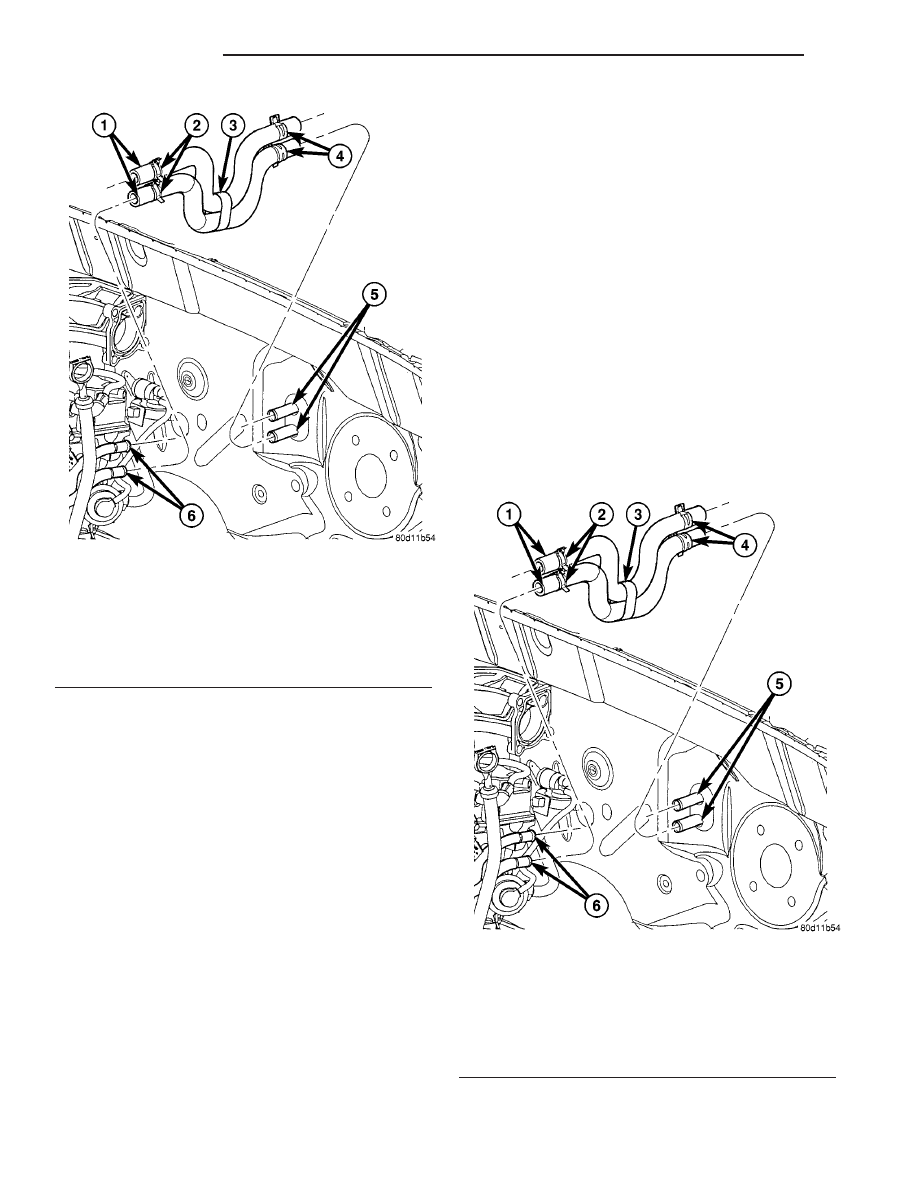Chrysler PT Cruiser. Manual - part 983

(5) Install the heater hose retainer.
(6) Refill the engine cooling system (Refer to 7 -
COOLING - STANDARD PROCEDURE - COOLING
SYSTEM REFILL).
HEATER RETURN HOSE
REMOVAL
WARNING: Review safety precautions and warnings
in this group before performing this procedure
(Refer to 24 - HEATING & AIR CONDITIONING/
PLUMBING - WARNINGS) and (Refer to 24 - HEAT-
ING & AIR CONDITIONING/PLUMBING - CAUTIONS).
Failure to follow the warnings and cautions could
result in possible personal injury or death.
(1) Drain the engine cooling system (Refer to 7 -
COOLING - STANDARD PROCEDURE - DRAINING
COOLING SYSTEM).
(2) Remove the heater hose retainer and separate
the heater inlet and return hoses (Fig. 19).
(3) Using spring tension clamp pliers, compress
and slide the clamps off of each end of the hose being
removed.
CAUTION:
DO NOT apply excessive pressure on heater tubes
or
connections
when
removing
heater
hoses.
Excessive pressure may damage or deform the
tubes/heater core, causing an engine coolant leak.
(4) Disconnect each hose end by carefully twisting
the hose back and forth on the tube, while gently
pulling it away from the end of the tube.
(5) If necessary, carefully cut the hose end and
peel the hose off of the tube.
NOTE:
Replacement of the heater return hose will be
required if the hose ends are cut for removal.
(6) Remove the heater return hose from the engine
compartment.
Fig. 18 Heater Hose Assembly- LHD 2.0L Shown,
RHD Typical
1 - HEATER HOSES
2 - HEATER HOSE CLAMPS
3 - HEATER HOSE RETAINER
4 - HEATER HOSE CLAMPS
5 - HEATER CORE TUBES
6 - ENGINE HEATER PIPES
Fig. 19 Heater Hose Assembly- LHD 2.0L Shown,
RHD Typical
1 - HEATER HOSES
2 - HEATER HOSE CLAMPS
3 - HEATER HOSE RETAINER
4 - HEATER HOSE CLAMPS
5 - HEATER CORE TUBES
6 - ENGINE HEATER PIPES
24 - 54
PLUMBING
PT
HEATER INLET HOSE (Continued)